Leg Armor
Scaled armor has existed since ancient times. For example, in the VII – III century B.C.E. the Scythians made scaled armor using bronze, iron, bones or thick leather. It is composed of small scales attached to a base material such as leather or cloth. The scales were typically in the shape of slightly elongated fish
This Brigandine skirt was made from 1.5mm mild steel. Covered with red wool. It has two rows of leather straps on the sides. You can regulate the comfortable fit. Overlapping articulated steel lames. The thick leather top with holes so you can fix brigandine skirt on the gambeson. Brigandine skirt is an addition to your
With our Brigandine Cuissards with Splinted Segments, we’ve crafted leg protection that is both highly protective and quite visually appealing. The alternating vertical rows of metal plates and textile are eye catching and functional. Your thighs will be well protected from all sides and look great at the same time. The articulated knees are joined
Leather or fabric with riveted and/or sewed metal plates underneath was an extremely popular form of armor among warriors of the XIV century. Brigandine armor was a precursor to plate armor (often called “white armor”). Due to their lower cost of production and upkeep, brigandine elements were accessible to nearly all medieval knights of Western
Greaves (also known as “grêves” [French], “Beinröhren” [German] or “schinieri” [Italian]) are an essential part of any leg harness. These brigandine greaves are reinforced with steel plates and the shin is totally protected from all sides. The armor is fastened with leather straps and steel buckles. Brigandine armor is easily adjustable thanks to its special
Our Splinted Full legs are crafted with both protection and comfort in mind. They consist of a set of Splinted Cuisses with Knees and Splinted Greaves, combined here for ease of purchase. Please note that measurements should be with padding/gambeson.
The XIV century was a time of numerous experiments with the development plate armor. Though different materials were in use until the end of the XIV century, beginning in approximately 1350, steel and iron became the predominant materials for armor smiths. In Italy, and especially in Germany, blacksmiths created a large variety of shapes for
Nearly all commonly used elements of medieval armor (protection for the head, arms, torso, and legs) were designed by the first half of the XIV century. Only a few “new” details and elements were added during the last half of that century. By the XV century, armor had evolved to become what we know as “full plate
The history of leg armor is the story of how mail stockings transformed in to a full plate leg harness. The first element appeared in the XII century. It was a simple knee protection: a round dish-shaped metal scale sewed upon leather. At the beginning of the XIV century the hauberk became shorter and shorter.
Our Brigandine Legs with Splinted Segments consists of cuissards, articulated knees, and greaves. The Brigandine Legs are further reinforced with steel plates. The articulated knees are joined to the cuisses with rivets, creating one piece – no holes, no leather laces. The leg harnesses have leather arming points at the top and are equipped with
This model of leg armor is based on medieval plate legs typical for the late XIV and early XV centuries. As armor evolved, leg protection changed from its early forms to functional, articulated plate armor. The most essential part thereof is the hip plate. It’s made from one metal sheet and forged to conform to
When you’re deciding on your battle equipment, the kind of articulated plate armor you choose is of the utmost importance. After all, the thigh takes the most severe blows. You raise your shield over your head and there’s nothing left for your opponent to hit other than your upper leg armor. Therefore, it’s important to
Medieval Leg Armour
Only knights and cavalry could afford full leg armor back in the Middle Ages. Infantry and other soldiers could only count on leather and brigandine leg armor. Of course, after big battles, the soldiers engaged in looting and removing their fallen enemies’ trophies. These, however, were isolated cases because the lion’s share of the trophies were usually taken by the warlords.
Show more...
This lack of leg armor was the reason that most injuries sustained during combat were limb injuries. Add to that mix the horrible medicine that was prevalent in the Middle Ages, and you get a huge percentage of deaths due to limb injuries.
During periods of peace, the rulers did everything to keep the military training of knights at a proper level. One of the ways to do that was to set up tournaments. There was a little problem, however – knights often died in the tournaments, which was obviously not the way rulers would want it. Therefore, rules were put in place which allowed only non-sharpened weapons. The spectators naturally wanted more blood, but at the same time, they realized this kind of entertainment could also be interesting and warmed up to the new rules.
There were many varieties of tournaments. There were those in which the knights didn’t need full leg armor. This kind of tournament was called “through the pole.” During this type of battle, the combatants were located on either side of a pole. The pole itself was set parallel to the ground at approximately belt level. As a result, knights could only hit above the belt since leg kicks and strikes were not possible. There were also other kinds of tournaments that required good leg armor as strikes there were permitted, and the combatants required full protection. Several hundred years have passed, and full-contact battles are of increasing interest and are gaining more and more viewers.
Everyone who is engaged in, or thinking about HMB and IMCF full-contact fights should approach choosing their equipment as seriously and responsibly as possible. Beginners typically want to cover their hands and arms first, expecting their opponents to hit the upper limbs more. However, our battle experience shows that fighters actually get more injuries they could’ve avoided if only they had adequately armored legs. It’s also important not to overlook the fact that high-quality articulated plate armor will increase your confidence in both buhurt and duels especially during the times when it’s important to stand firmly on your feet or make a leap towards the enemy.
The majority of leg strikes fall on the upper leg armor and much fewer on lower leg armor, which is why we recommend using stronger materials on the upper leg. Nevertheless, greaves remain highly important as you are covering potentially open areas, allowing you to concentrate on your fighting technique and your opponent. Also, something to keep in mind, whether intentionally or accidentally, chances are you will still be hit in the gaps between armor elements despite the fact that it is forbidden. Hence the importance of durable leg armor that reduces gaps to the maximum extent possible.
We also can’t ignore sabatons! “Who’s going to hit my feet with a weapon?” you may ask. However, if you watch a buhurt, you’ll notice that if one falls down during the battle, the fight goes on, no one pays attention to you, and especially to where your feet are. However, they are open and any accidental impact is a threat. The fighters are focused on their enemies, not you. In this situation, even a member of your own team is as dangerous to you as an enemy if you don’t have sabatons.
Hopefully this piece has illustrated to you that full leg armor is an integral part of your battle equipment, and that lower leg armor is as important as upper leg armor. In addition, don’t forget to take care of your feet and put on sabatons.
Forge of Svan has been manufacturing medieval plate legs since 2004. We have extensive experience with splinted leg armor as well as leather leg armor. Therefore, don’t delay – get your battle protection! Your opponents ordered their armor from us a long time ago, which is they are so confident. Get yours today!
less..

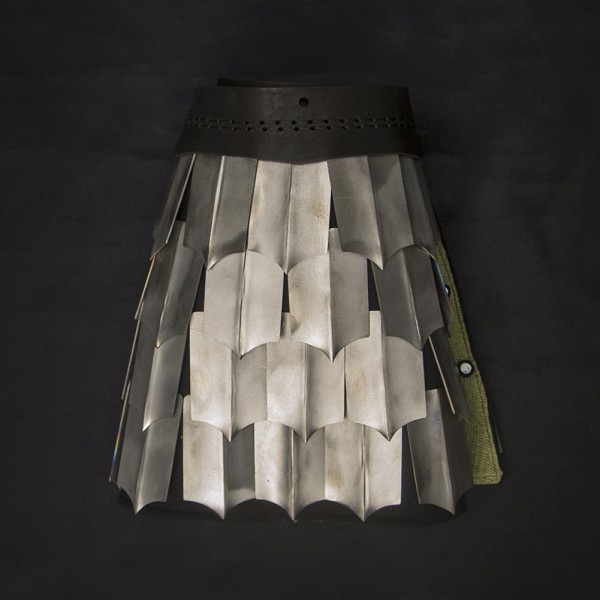
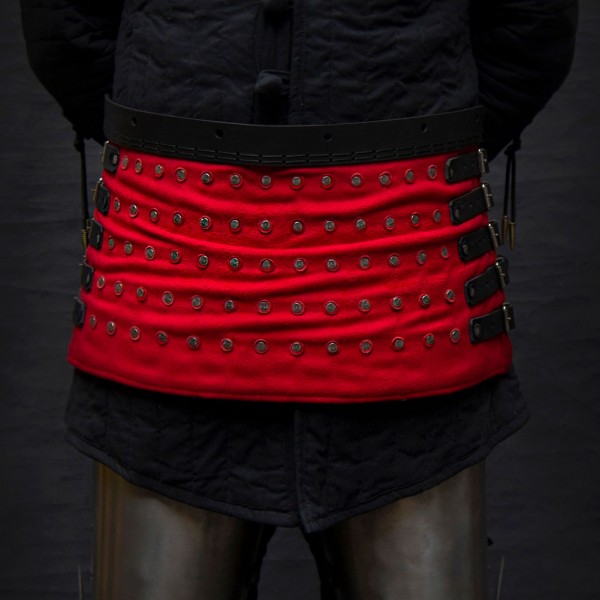
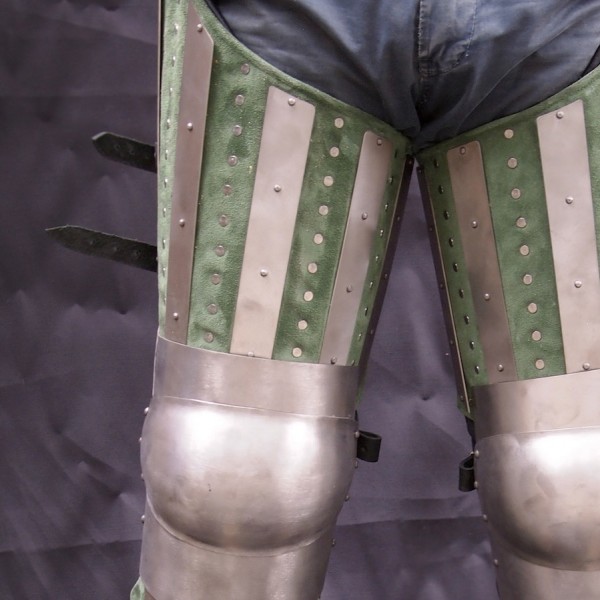
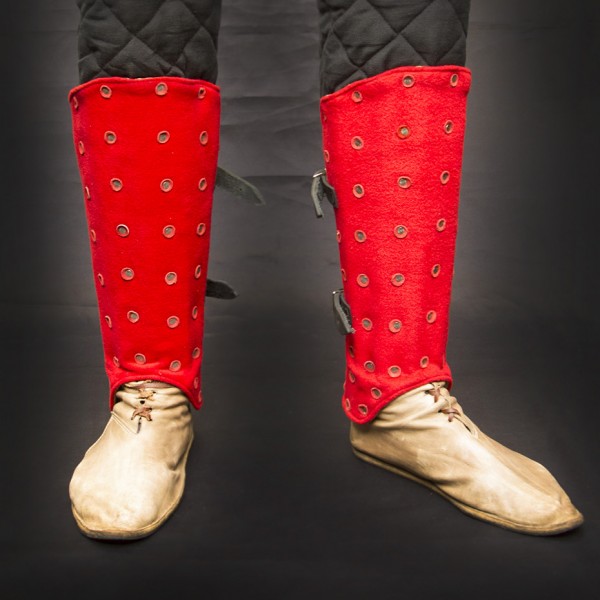
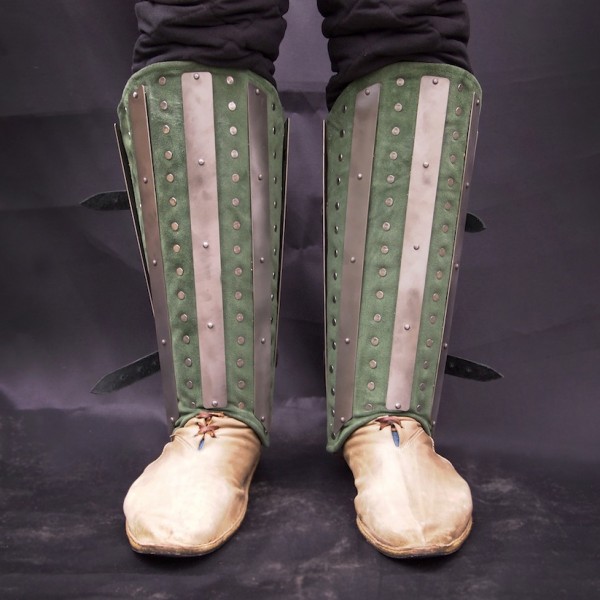
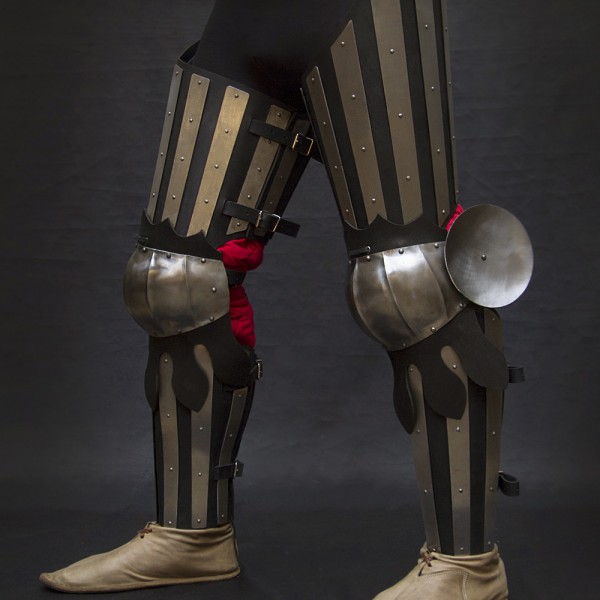
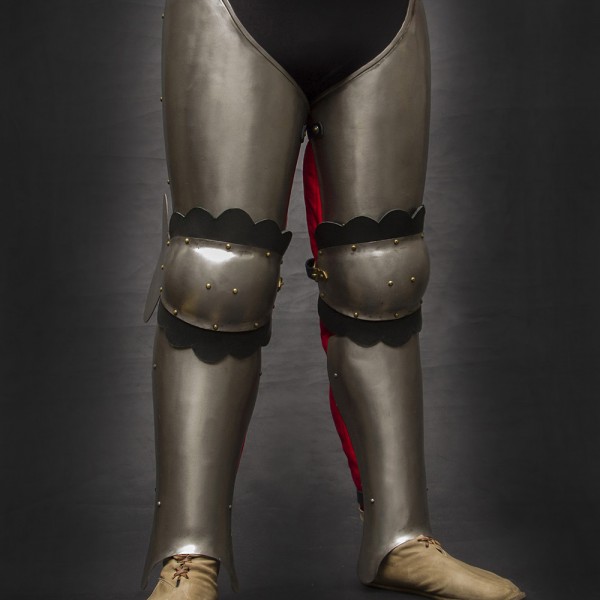
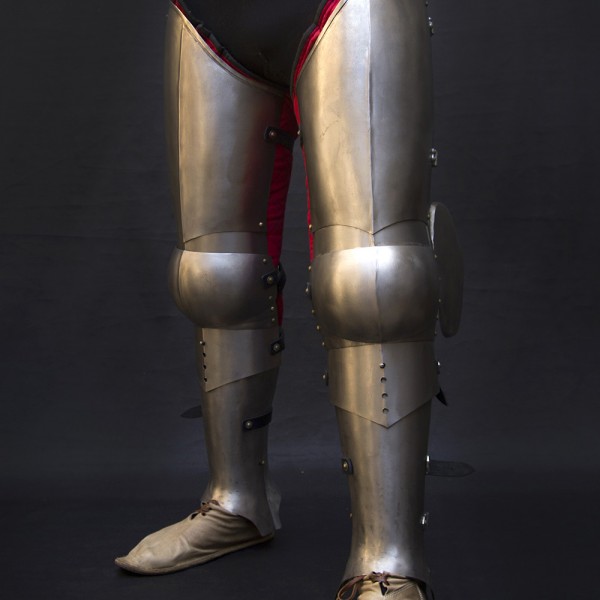
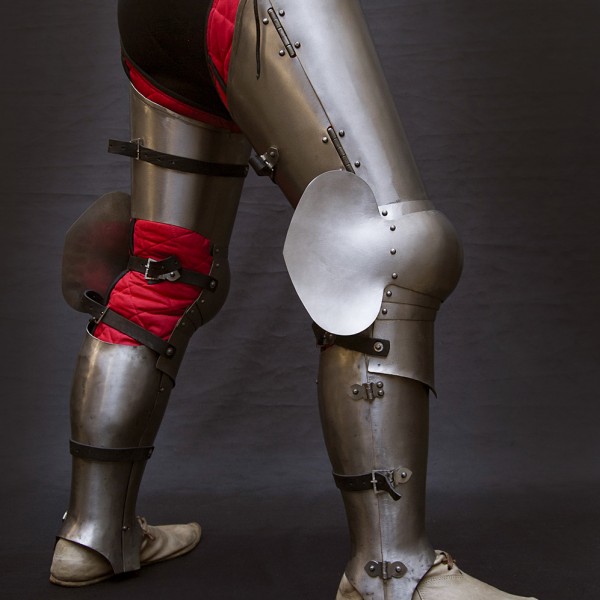
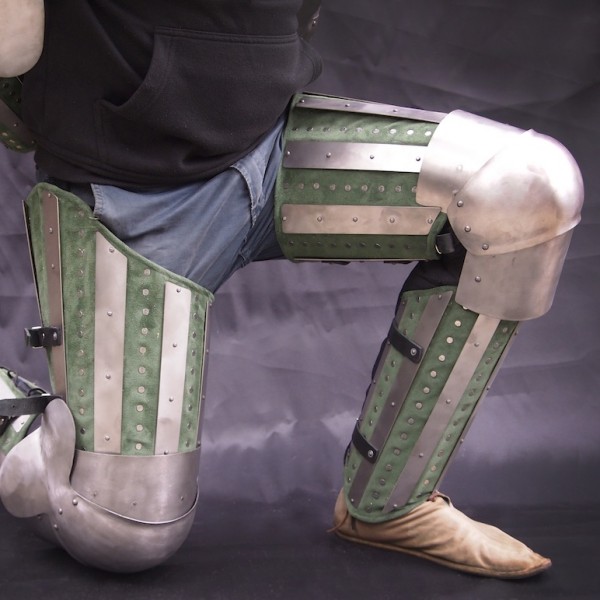
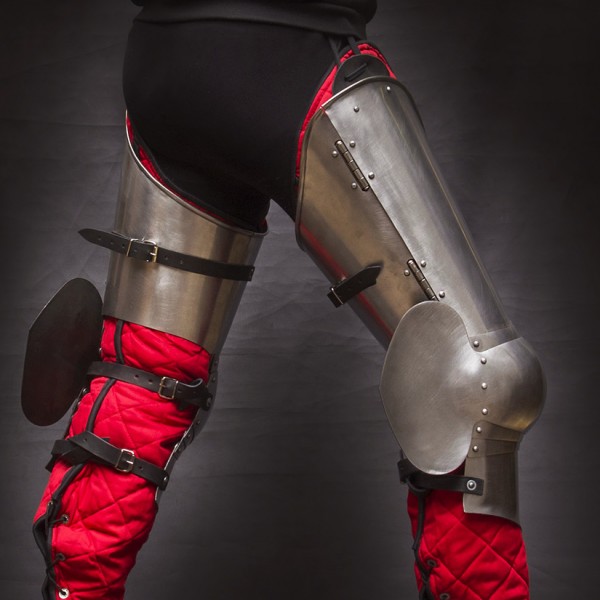
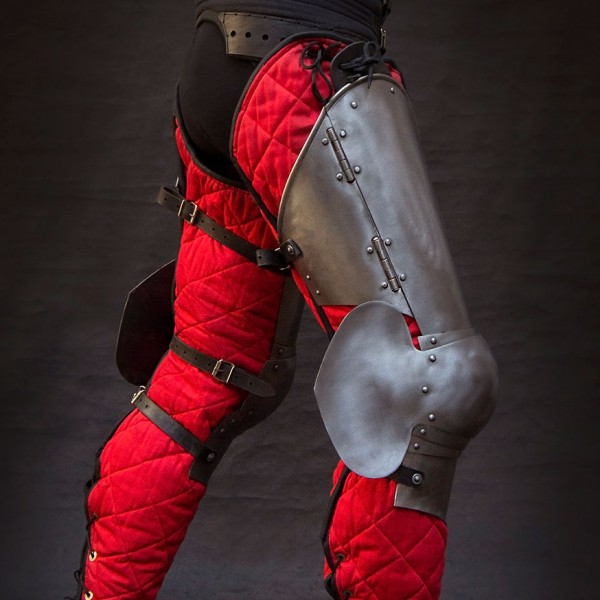
 Shop
Shop